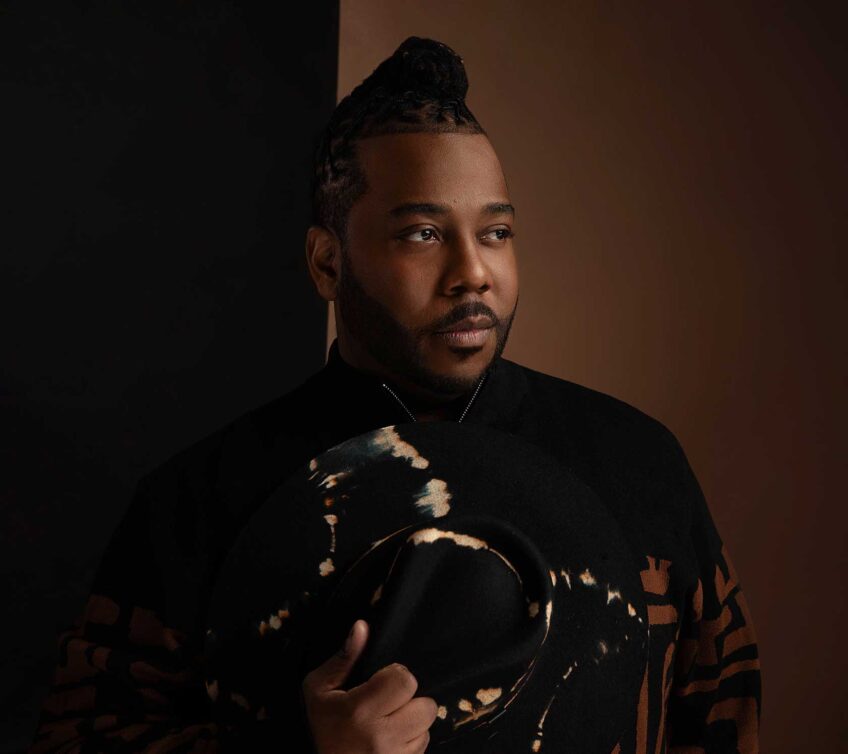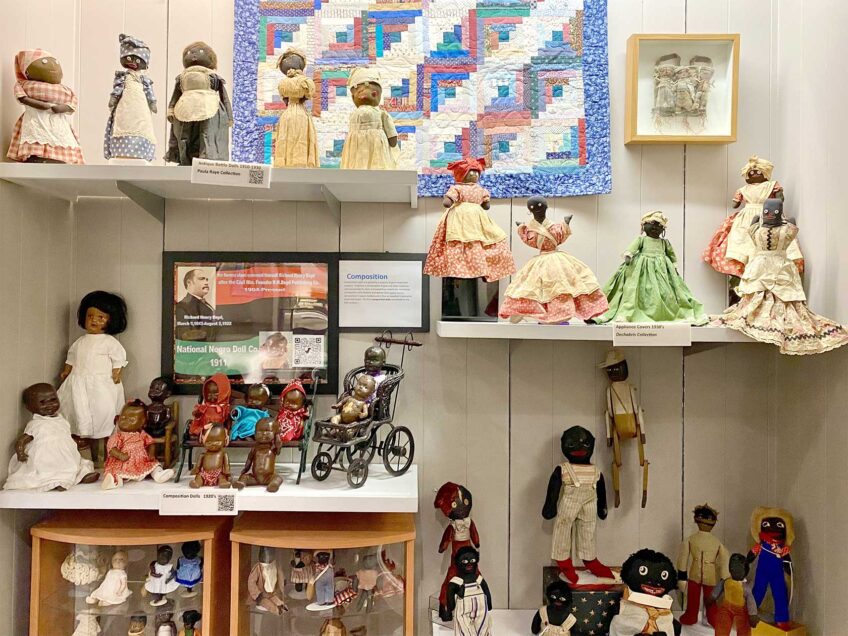Unfinished journey
Museum traces path toward justice and freedom for African Americans

As the elevator descends from the street-level concourse of the National Museum of African American History and Culture in Washington, D.C., a timeline on the wall traces each passing floor and era: 1968 and beyond; 1876–1968; and finally, the third level, where the museum’s exhibition begins, 1400–1877.

Author: Susan SaccocciaGolliwogg figures at the National Museum of African American History and Culture.

Author: Susan SaccocciaThe Contemplative Court.
On the Web
For more information about the Smithsonian National Museum of African American History & Culture, visit: https://nmaahc.si.edu/
The largest institution dedicated to African American history and culture, the museum starts its story in the 1400s, when African peoples took part in transatlantic trade with countries on other continents. Displays and wall texts follow the money, and the gradual growth of the fiction that Africans were not equals and could themselves be traded as commodities.
Artifacts on view trace the growing economic dependence on slavery, first in Europe and then in its New World colonies, as cotton became king — and how society and culture reinforced the fiction of inequality. Small but telling objects on display include children’s books, toys and household items showing black people as servants, mammies, laborers, minstrels, blackface golliwog dolls and other caricatures.
Exhibits follow this story through the Revolutionary War; the Civil War; the post-emancipation decades of segregation known as the Jim Crow era; the Great Migration, the epic passage north for a livelihood and better life; the turbulent 1960s when the Civil Rights Movement gained traction; and onward to the present day.
Since its inauguration by President Barack Obama on Sept. 24, 2016, the museum has drawn more than 2.5 million visitors and become the most coveted ticket in town. The building closest to the Washington Monument, the museum makes the majesty of blackness visible to all who enter the National Mall, the symbolic epicenter of the city.
Architect David Adjaye, born in Tanzania to Ghanaian parents, was lead designer of the building and its distinctive exterior — a three-tiered bronze metal corona of intricate latticework inspired by the three-tiered crowns of Yoruban art in West Africa and the intricate ironwork crafted by enslaved African Americans.
Inside, compelling displays on five levels showcase 3,000 artifacts from the museum’s permanent collection of nearly 40,000 objects. Some objects take an intimate turn and tell personal stories. On view are the dress that seamstress Rosa Parks was sewing the day she refused to give up her seat to a white man on a bus in Montgomery, Alabama, and
a photographic portrait of abolitionist Harriet Tubman (1822–1913), along with her hymnal and a linen-and-silk shawl given to her by Queen Victoria.
A quietly poignant treasure from the mid 1800s is a burlap feed sack, the parting gift from Rose, a slave, to her 9-year-old daughter, Ashley, who was being sold away by the South Carolina planter who owned them. In 1921, Ashley’s granddaughter, Ruth Jones Middleton, embroidered the sack with a description of its original contents: “a tattered dress 3 handfulls of pecans a braid of Roses hair” and “filled with my Love always.”
Connected by sloped ramps, the three below-ground floors ascend through the decades and display life-size installations as well as artifacts. On the second level, a large hall with high gray walls, exhibits include a freed slave’s house, a segregated rail car, an interactive lunch counter exhibit, a guardhouse from Angola Prison, and the plane of a Tuskegee Airman.
Engraved on the wall are quotations from America’s third president, Thomas Jefferson, and author James Baldwin. Accompanying Jefferson’s words from the Declaration of Independence, “All men are created equal,” is a panel bearing the names of his slaves, including Sally Hemings, with whom he fathered a child.
Connecting past and present, Baldwin’s quotation states, “The great force of history comes from the fact that we carry it within us, are unconsciously controlled by it … History is literally present in all we do.”
Before the exhibition ascends to the first level and its concluding segment, “A Changing America: 1968 and Beyond,” a wrenching memorial commemorates Emmett Till, the 14-year-old from Chicago who, while visiting relatives in Mississippi, was murdered for whistling at a white woman. On view are the glass-topped casket used to display and bury the boy’s body and a video showing his magnificent mother as she insists that his mangled body be exposed for all to see — an act that helped to galvanize the Civil Rights Movement.
Offering a place of rest and reflection is the museum’s Contemplative Court, where arcs of light and water surround visitors and a wall displays a quotation from Dr. Martin Luther King Jr.’s renowned 1963 work, “Letter from Birmingham Jail.” Inscribed on the dark stone are the words, “Let justice roll down like waters and righteousness like a mighty stream.”
The museum’s upper levels showcase African American achievements in the arts, sports and public life. But as the exhibition on its three lower floors makes plain, the journey toward justice and freedom is an unfinished story, a struggle that continues to this day.


![Banner [Virtual] Art Gallery](https://baystatebanner.com/wp-content/uploads/2024/04/Cagen-Luse_Men-at-store-e1713991226112-150x150.jpg)

![Banner [Virtual] Art Gallery](https://baystatebanner.com/wp-content/uploads/2024/04/Cagen-Luse_Men-at-store-e1713991226112-848x569.jpg)

